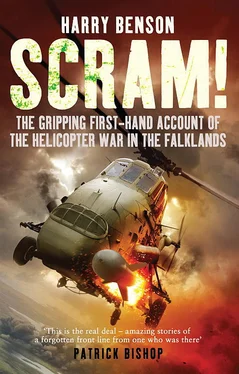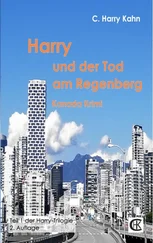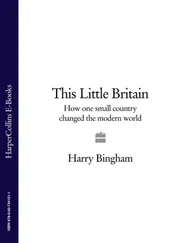Amongst the junglie Wessex crews, Jack Lomas and Mike Booth were each awarded the Distinguished Service Cross for their leadership of 845 and 847 Squadrons respectively, to a large extent on our behalf. Apart from Pete Manley and Arthur Balls, who especially deserved their Mentions in Despatches – an oak leaf to go on top of their Falklands campaign medal and rosette – no other Wessex crews or maintainers received bravery awards.
The Sir Galahad incident still sparks discussion. Flipper Hughes and Bill Tuttey missed out where other helicopter crews who did near-enough identical work were recognised for their courage. I and most other Wessex colleagues are pretty sanguine about this and unreservedly congratulate the 825 and 846 Squadron Sea King aircrews, who did receive awards. The prevailing view at the time was that we were just doing our job. Frankly the troops on the ground were vastly more heroic.
I wear my own Falklands campaign medal and rosette with great pride. My award ceremony was unexpectedly informal. It was a shout down the corridor from the 845 Squadron staff office at Yeovilton. ‘Oi, Benson! Come and get your gong. It’s in your pigeon hole.’ I awarded my medal to myself.
After satisfying the immediate interest in the war when I returned home, I found I didn’t want to talk about it to anyone again for many years. I buried the whole subject away until the twentieth anniversary, when I suddenly felt compelled to revisit it all. I watched TV documentaries and read books. I cried a few times, all in private. What was that all about? I really don’t know. Maybe it was what I’d done: the strange paradox of the exhilaration of flying in a war as a young man, doing a job I was really good at, and the shocking fact of facilitating violence between my fellow men. Maybe it was what I’d seen, the explosions and bodies and wounds. Loud bangs still scare the living daylights out of me. Others experienced far worse. I rang up a former colleague to talk it all through because he would understand. He didn’t at first. He told me years later he felt bemused about the whole thing. Five years later, he rang me in a flood of tears himself, desperately needing to talk. It had finally hit him.
After almost all of the forty-five interviews I did for this book, I heard similar views expressed. Telling the story felt cathartic. For many it was the first time they had let it all out. As I arrived at one colleague’s house, his wife told me she would leave us alone; after all she’d heard all his war stories before. After three hours of being interviewed, he told me this was the first time he’d ever told anyone the whole story. Some of the individual stories have never been told to anyone at all. I felt privileged to hear them for the first time.
My job today is far removed from flying a Royal Navy junglie helicopter. I teach couples and new parents how to stay together. I’ve run hundreds of relationship courses. I get to read a great many research papers. One of the most striking findings from research into military families is that it’s not the long periods of separation that make couples more likely to split up. It’s the experience of combat. If you’ve been in battle, you’re far more likely to split up than other comparable families. I can well understand why.
It makes me wonder how the troops on the ground have coped. They experienced battle at close quarters. Our aircrewmen also came face to face with appalling wounds and human suffering. But we pilots just acted as glorified taxi-drivers. I wonder what kind of mental health time-bombs we have in store from our vastly more shocking forays into Iraq and Afghanistan. They used to be called honourable wounds.
Nobody talks. That’s why I wanted to tell our story.
1. Harry Benson after the war © Harry Benson
2. Fortuna Glacier crash © Stewart Cooper
3. Gazelle © Harry Benson
4. Wessex 5 © Stewart Cooper
5. HMS Antrim © Stewart Cooper
6. Flight deck of HMS Antrim © Stewart Cooper
7. 847 Squadron badge © Harry Benson
8. Deck hockey © Harry Benson
9. Argentine Pucara aircraft © Mark Brickell
10. Arthur Balls © John Ryall
11. Bravo November © Graham Colbeck, courtesy of Imperial War Museum (FKD 2753)
12. 845 Squadron © John Ryall
13. QE2 © Stewart Cooper
14. Wessex at Port San Carlos © Imperial War Museum (FKD 1291)
15. 5 Brigade troops at San Carlos, Crown Copyright © 1982 / Soldier Magazine / Paul Haley
16. Scouts, Crown Copyright © 1982 / Soldier Magazine / Paul Haley
17. Note from Tim Stanning © Tim Stanning
18. Pucara © Harry Benson
19. Port Stanley raid © Jerry Spence
20. Wessex on Two Sisters © Imperial War Museum (FKD 117)
21. Gazelle and Wessex, Crown Copyright © 1982 / Soldier Magazine / Paul Haley
22. Wessex, Crown Copyright © 1982 / Soldier Magazine / Paul Haley
23. Ajax Bay © John Ryall
24. Wessex coming in to land © Imperial War Museum (FKD 362)
25. Sea King unloading troops, Crown Copyright © 1982 / Soldier Magazine / Paul Haley
26. SS Uganda © Harry Benson
27. Scots Guards, Crown Copyright © 1982 / Soldier Magazine / Paul Haley
28. SAS soldier and Scout crew, Crown Copyright © 1982 / Soldier Magazine / Paul Haley
29. Port Stanley © Harry Benson
30. Wessex refuelling © Jerry Spence
31. Sir Tristram © Harry Benson
32. Wasp © Harry Benson
Picture Section
33. On my way to the Falklands © Harry Benson
34. RFA Engadine © Harry Benson
35. Night flyers © Simon Thornewill
36. HMS Sheffield © John Ryall
37. San Carlos water © Simon Thornewill
38. D-Day landings © Rick Jolly
39. Sea Kings on SS Canberra © Simon Thornewill
40. Sea King © Simon Thornewill
41. Sea King refuelling © Harry Benson
42. HMS Antelope © Press Association Images
43. HMS Coventry © John Ryall
44. 847 Squadron rescue © Press Association Images
45. Sea King and RFA Sir Galahad © Press Association Images
46. RFA Sir Galahad © Tim Stanning
47. HMS Plymouth © Rick Jolly
48. Forward Operating Base at San Carlos © John Ryall
49. End of the war © Harry Benson
50. Pucara © Harry Benson
51. Formation fly past © Harry Benson
52. Arriving home © Jamie Guise
53. Lieutenant Benson RN © Harry Benson
While every effort has been made to contact copyright holders, the author and publisher would be grateful for information about any material where they have been unable to trace the source, and would be glad to make amendments in further editions.
Writing this book has been a real labour of love. I started interviewing former colleagues in the summer of 2009. I am indebted to all who put up with my digging into ancient memories that many may have preferred to be left alone. Most said they would remember little. All remembered a lot. I am grateful for their cooperation and hope they will be proud of the end product. It’s our story.
Thank you so much to my junglie and other aircrew friends and colleagues for generously allowing me to interview you and revisit 1982 together: Splash Ashdown, Arthur Balls, David Baston, Andy Berryman, Mike Booth, Mark Brickell, Chris Clayton, Stewart Cooper, Al Doughty, Mark Evans, Rob Flexman, Nick Foster, Ric Fox, Ian Georgeson, Sparky Harden, Willie Harrower, Paul Heathcote, Tim Hughes, Trevor Jackson, Dave Knight, Steve Larsen, Jack Lomas, Jan Lomas, Pete Manley, Paul McIntosh, Ralph Miles, Richard Morton, Nigel North, Dave Ockleton, Bill Pollock, Mark Salter, Reg Sharland, Pete Skinner, Jerry Spence, Ian Stanley, Tim Stanning, Simon Thornewill, Mike Tidd, Bill Tuttey, Ian Tyrrell, Peter Vowles, Roger Warden. Also a huge thank you to some key characters who gave me their valuable insights: Ed Featherstone, Rick Jolly, Julian Thompson. Thank you too to Georgina Reed for transcribing many hours of recordings.
Читать дальше












